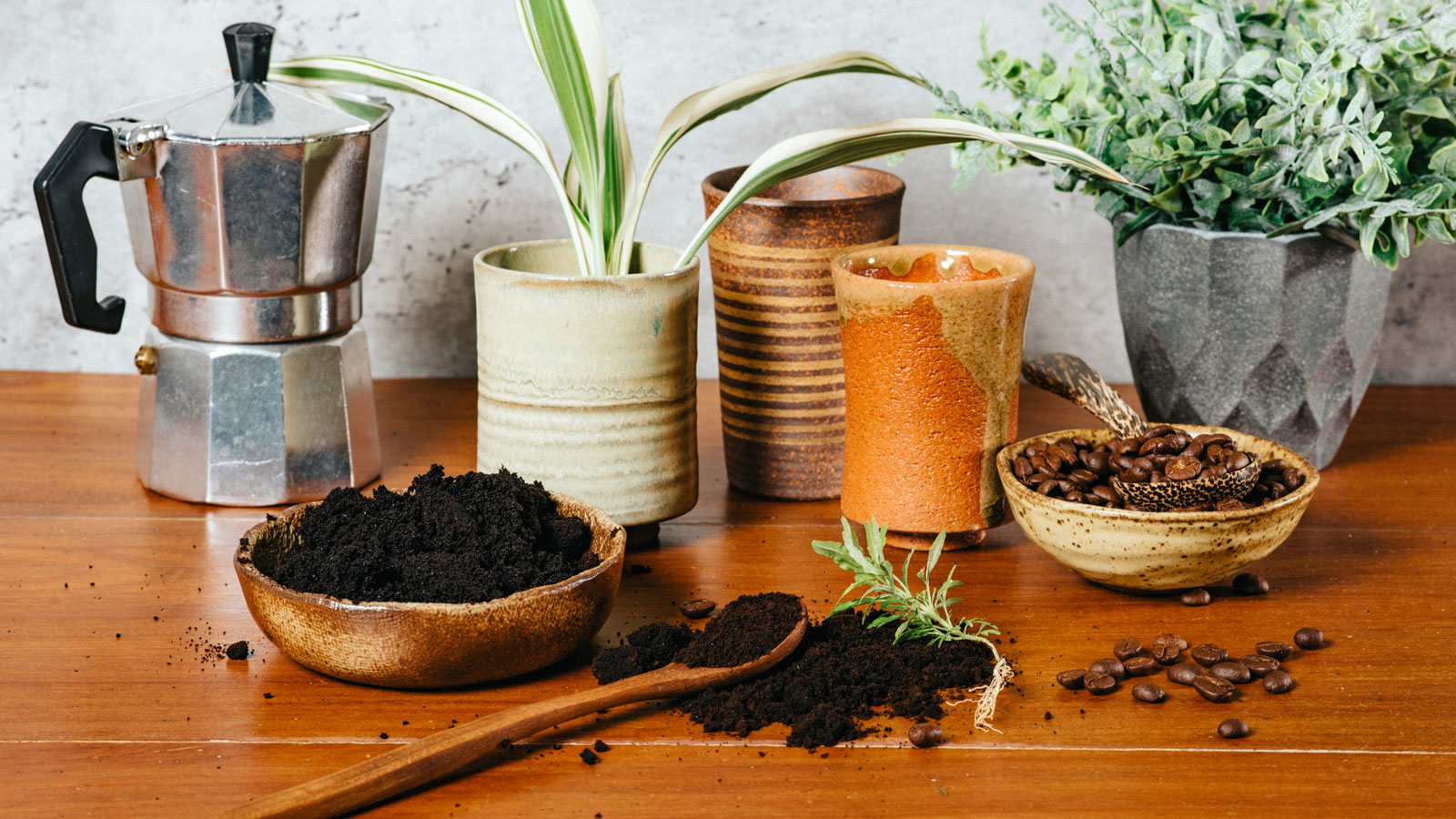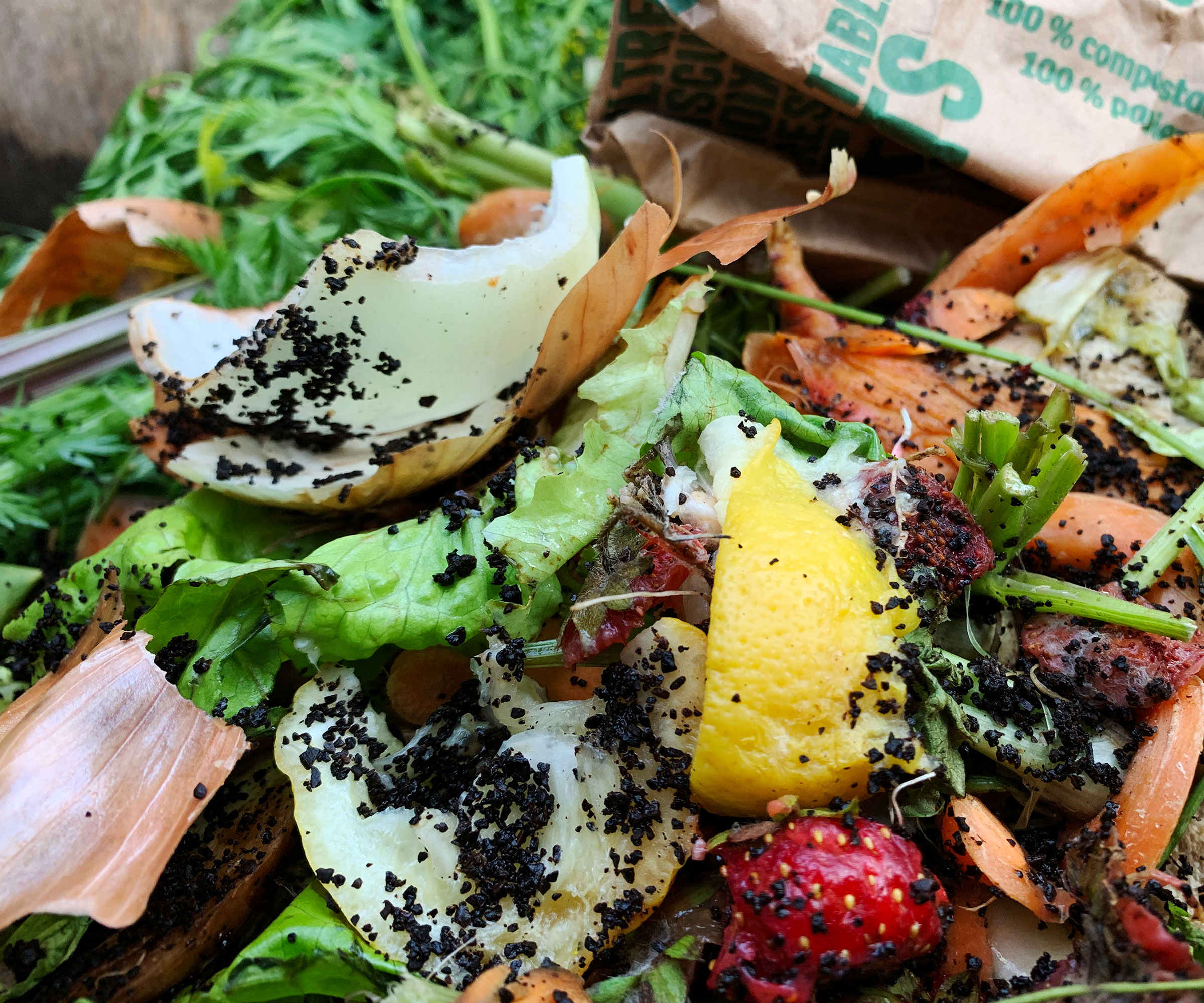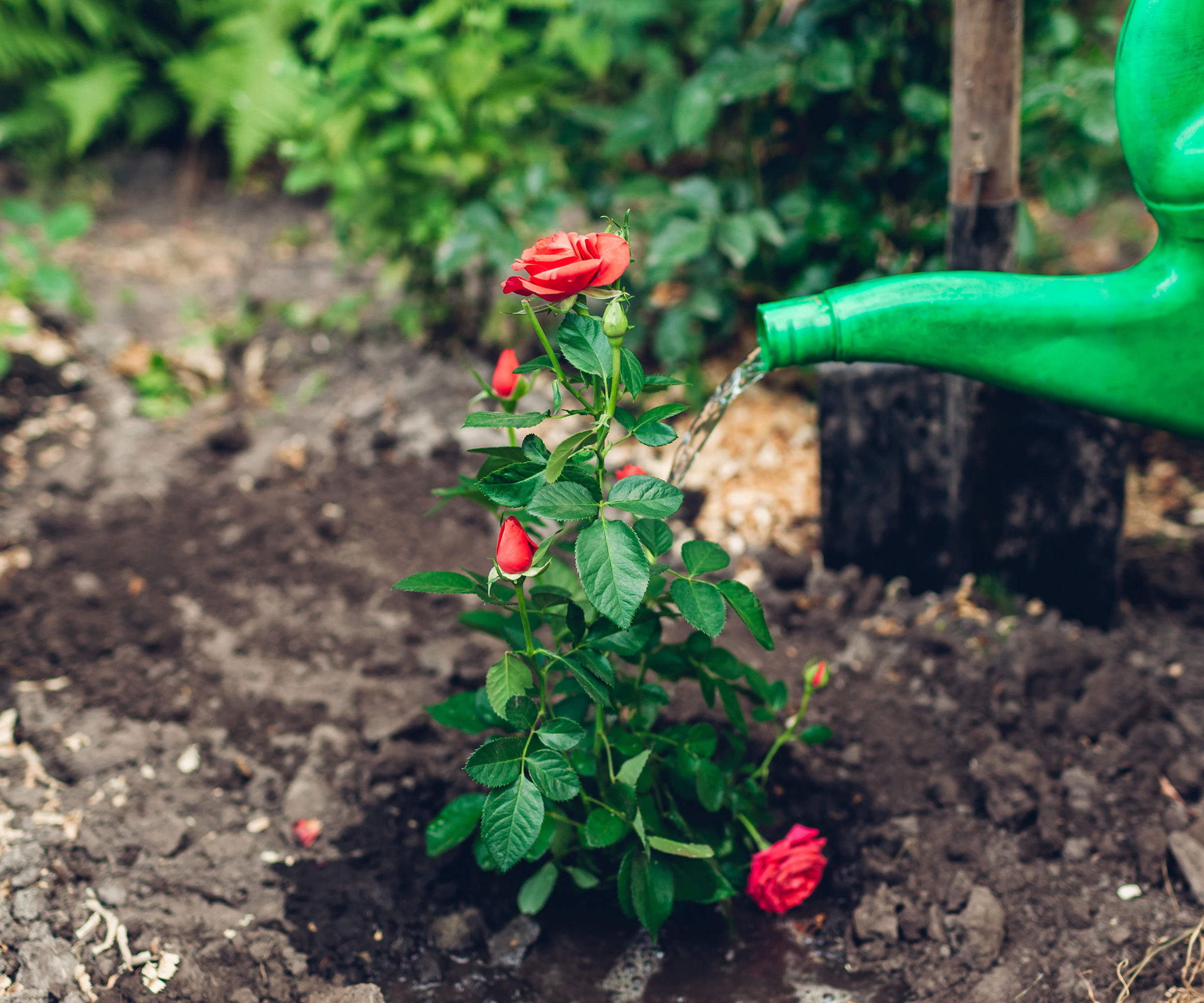Give Compost A Pick Me Up: How To Use Coffee Grounds On Plants In The Garden
Coffee is not just a mood booster for people – it can also give your garden a helping hand if applied correctly. We show you how to add coffee grounds on plants so they flourish


Heather Rhoades
A cup of coffee in the morning can perk you up and give you energy to face the day. So it’s tempting to wonder if coffee grounds on plants can also be beneficial. But are coffee grounds good for the garden? In fact, used coffee grounds for plants can get tossed straight into the compost with great results. But it’s not a great idea to put them directly on the soil.
Coffee is the number two world commodity after crude oil, so it makes sense to wonder if all those spent coffee grounds can be reused in the garden. While used coffee grounds contain nitrogen, it is not readily available to plants if you apply it directly to soil. In fact, researchers have determined that when spent coffee grounds are applied directly to city vegetable gardens, plant growth can even be reduced.
However, there are ways to get the nitrogen from coffee grounds into a form accessible to plants. The way to do it is via the compost pile. If you're learning how to compost, here we show you how to add another dimension to the pile using coffee grounds.
How To Use Coffee Grounds in The Garden
If you want to use coffee grounds in your garden, the best way is to compost them. It is tempting to simply pile the spent grounds on the soil beneath your plants, but this is not a good idea. Coffee grounds, fresh and used, can prevent moisture and air from moving in and through the soil. Their fine texture means they compact readily. Just bear in mind that uncomposted coffee grounds are not a natural nitrogen fertilizer. However, they can be blended into soil to improve its texture.

Composting Your Coffee Grounds
Many gardeners make their own compost in compost heaps or bins in the backyard. Essentially, this involves piling up green material like vegetable and fruit scraps from the kitchen and garden with brown material like dried leaves. Over time, with water and sunlight, this material heats up and then breaks down into compost.
Composting coffee grounds is entirely possible, as long as you don’t add so much that it comprises more than 20-35 percent of the compost pile material. If you add more coffee grounds as compost, it can prevent the whole lot from decomposing. Composting coffee grounds is as easy as throwing the used coffee grounds onto your compost pile. Used coffee filters can be composted as well.
With pH levels from mildly acidic to alkaline, coffee grounds are considered green compost material. They decompose well as long as you remember to mix the whole thing with brown material like leaves and sawdust.
Gardening tips, videos, info and more delivered right to your inbox!
Sign up for the Gardening Know How newsletter today and receive a free copy of our e-book "How to Grow Delicious Tomatoes".

Using Coffee Grounds as Fertilizer
Although it’s not a good idea to pile used coffee grounds on soil, it’s fine to work some into the soil during planting. Experts recommend that, as you do this, you add a nitrogen fertilizer. Microbes in the soil will break down the coffee grounds to make the nitrogen available for the plants. While that happens, the additional fertilizer will be a source of nitrogen for them.
Another way to use coffee grounds in the soil is to make a coffee ground tea. This isn’t difficult. Simply mix a couple of cups of spent coffee grounds to a five-gallon bucket of water. Let the mixture sit overnight, then use it as a liquid fertilizer.
Note that some plants respond better to coffee grounds than others. Consider using coffee grounds as a fertilizer on tomatoes, cabbage, soybeans, fruit trees, corn, roses and camellias. However, don’t use directly on the soil when you are growing beans or bean-related plants.
Many people think coffee grounds lower the pH (or raise the acid level) of soil, which is good for acid-loving plants. This is only true for unwashed coffee grounds, though. Fresh coffee grounds are acidic. Used coffee grounds are neutral. If you rinse your used coffee grounds, they will have a near-neutral pH of 6.5 and will not affect the acid levels of the soil.

Using Fresh Coffee Grounds
While it's not always recommended, using fresh coffee grounds on plants shouldn't be a problem in some situations. As mentioned, you can sprinkle fresh coffee grounds around acid-loving plants like azaleas, hydrangeas, blueberries and lilies. Root crops like radishes and carrots also respond favorably -- especially when mixed with the soil at planting time.
The use of fresh coffee grounds are also thought to suppress weeds, having some allelopathic properties. Certain fungal pathogens may be suppressed as well.
Frequently Asked Questions
Should I use coffee grounds as a mulch?
Do not use spent coffee grounds for mulch. They can create a barrier preventing water from penetrating the soil. If you wish to amend the soil, apply a half-inch layer (1cm) to an empty plot and cover it with a four-inch (10cm) layer of wood chips.
How else can I use coffee grounds in the garden?
You can also use coffee grounds to deter vegetable garden pests such as slugs and snails. The theory is that the caffeine in the coffee grounds negatively affects these pests, so they avoid soil where grounds are found.
Some people also claim that coffee grounds on the soil is a cat repellent and will keep cats from using your flower and veggie beds as a litter box. You can also use coffee grounds as worm food, if you carry out vermicomposting with a worm bin. Worms are fond of coffee grounds.

Teo Spengler is a master gardener and a docent at the San Francisco Botanical Garden, where she hosts public tours. She has studied horticulture and written about nature, trees, plants, and gardening for more than two decades. Her extended family includes some 30 houseplants and hundreds of outdoor plants, including 250 trees, which are her main passion. Spengler currently splits her life between San Francisco and the French Basque Country, though she was raised in Alaska, giving her experience of gardening in a range of climates.
- Heather RhoadesFounder of Gardening Know How
-
 What Is A Pollinator Garden? Grow Gorgeous Blooms While Benefiting Your Local Ecosystem
What Is A Pollinator Garden? Grow Gorgeous Blooms While Benefiting Your Local EcosystemPollinator gardens look great and also provide a diverse ecosystem that benefits your local pollinating insects and animals. Get started today with this guide!
By Bonnie L. Grant
-
 5 Tough Urban Trees That Thrive In Cities – Top Picks For Urban & Suburban Landscapes
5 Tough Urban Trees That Thrive In Cities – Top Picks For Urban & Suburban LandscapesExplore the best urban trees that will add value to even the most challenging of landscapes. Get growing with these ideas and enjoy all the benefits of trees.
By Teo Spengler